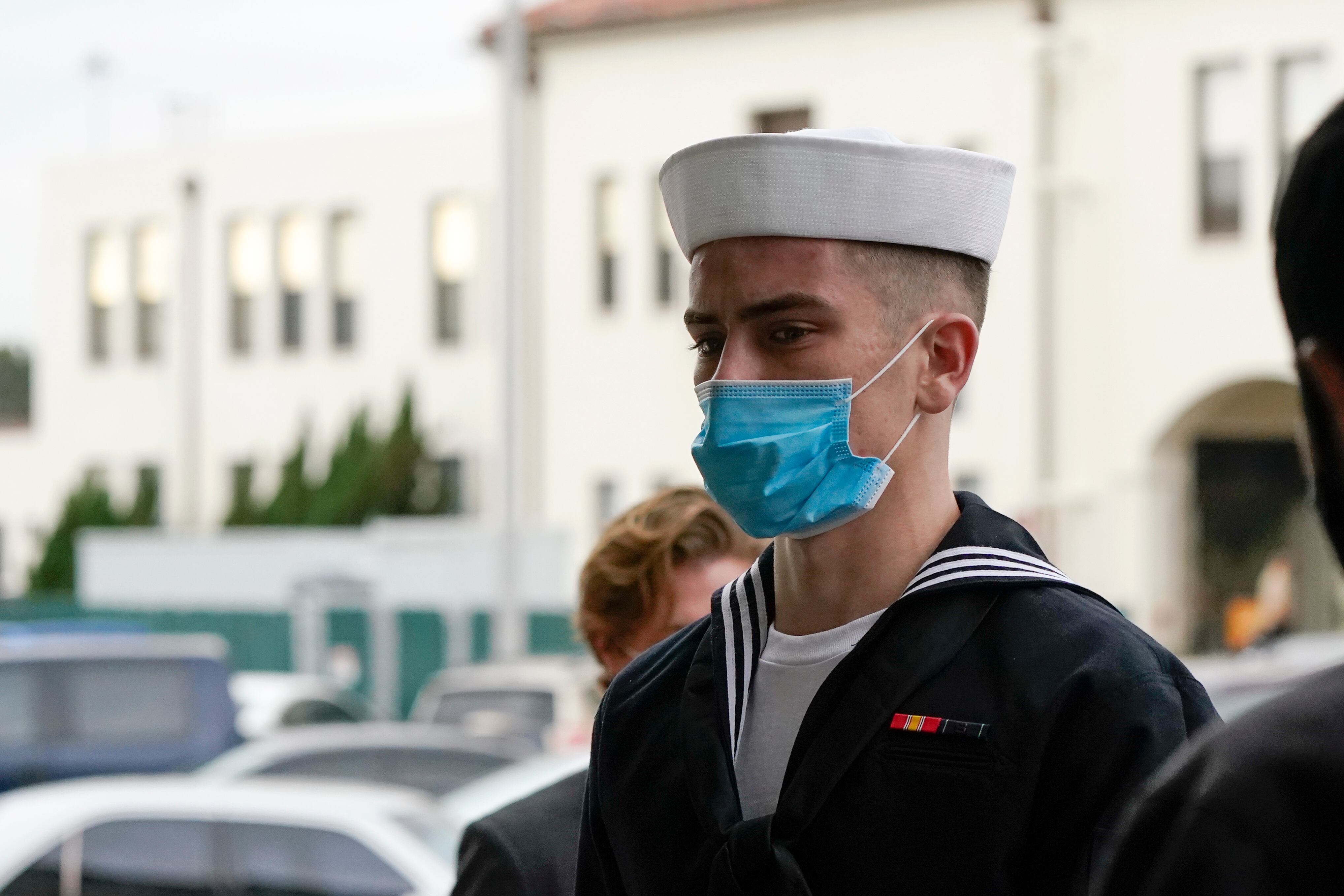When Ryan Sawyer Mays walked into a Navy courtroom late last year for a hearing that would help determine whether he goes to trial for allegedly starting the fire that ultimately destroyed the amphibious assault ship Bonhomme Richard, he did so as a seaman apprentice, or E-2 rank.
But photos from outside the December hearing show Mays wearing the three-stripes uniform insignia of a seaman E-3 on his left arm.
Despite being an institution well-known for its rigorous adherence to standards in all things uniform, the Navy can’t explain why the sailor was wearing the wrong insignia.
Navy Times asked the San Diego-based U.S. 3rd Fleet why Mays had three white stripes on his arm during the Article 32 hearing, in which an officer weighed evidence as to whether Mays should stand trial on charges of arson and improperly hazarding a vessel.
Third Fleet declined comment and referred questions to Mays’ civilian defense attorney, Gary Barthel.
RELATED

Navy officials told Barthel and his client that Mays would have “a proper uniform inspection” before the hearing, the attorney told Navy Times.
“I don’t know what happened, but his command did a uniform inspection of him before the Article 32,” he said this week. “I don’t know where the disconnect is on that, but they inspected his uniform twice.”
Mays denies starting the July 2020 fire aboard Bonhomme Richard and Barthel argued at the Article 32 that there was no physical evidence tying his client to the blaze.
Prosecutors argued at the hearing that witnesses placed Mays near the site of the fire’s origin and that the former SEAL candidate was a “disgruntled” sailor, the Associated Press reported last month.
Third Fleet has yet to release a decision on whether the charges against Mays will be referred to court-martial.
Navy records show Mays was advanced to E-2 on June 3, 2021, 11 months after the inferno and eight weeks before the Navy preferred charges against him for starting the fire aboard the billion-dollar warship, which burned for five days and led the Navy to scrap the once-mighty amphib.
While Mays was already suspected of starting the fire at the time of his advancement, the bump up from E-1 to E-2 is generally automatic following a certain amount of time in service.
RELATED

If Mays’ command wanted to delay his advancement, they would have had to do a “Page 13″ administrative action or give him an adverse evaluation, according to Lauren Hanzel, a former Navy attorney now in private practice.
But such a move could have left the Navy open to allegations that they were making a judgement on Mays’ guilt before he was charged, Hanzel said.
“I think that was prudent and smart, particularly pre-referral (of criminal charges), in order to avoid any appearance of illegal pre-trial punishment or pre-decision,” she said. “There’s no advantage to the government in preventing this (advancement).”
Geoff is the managing editor of Military Times, but he still loves writing stories. He covered Iraq and Afghanistan extensively and was a reporter at the Chicago Tribune. He welcomes any and all kinds of tips at geoffz@militarytimes.com.




